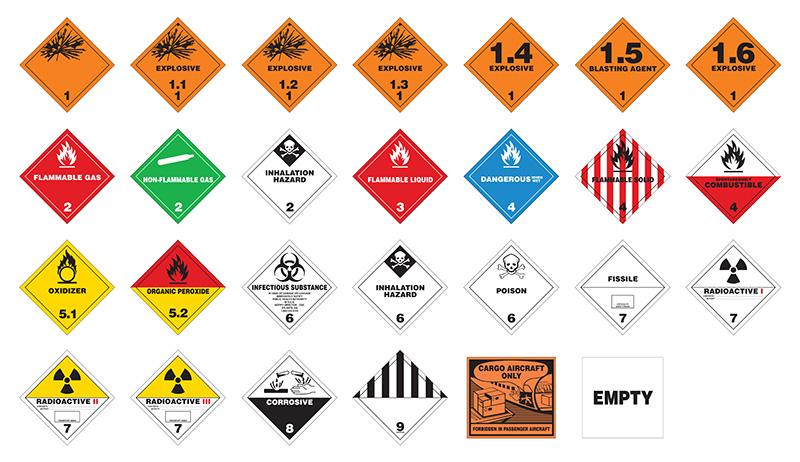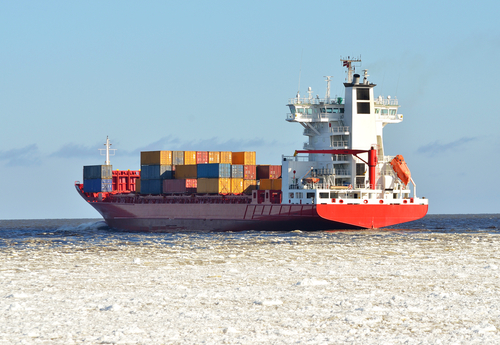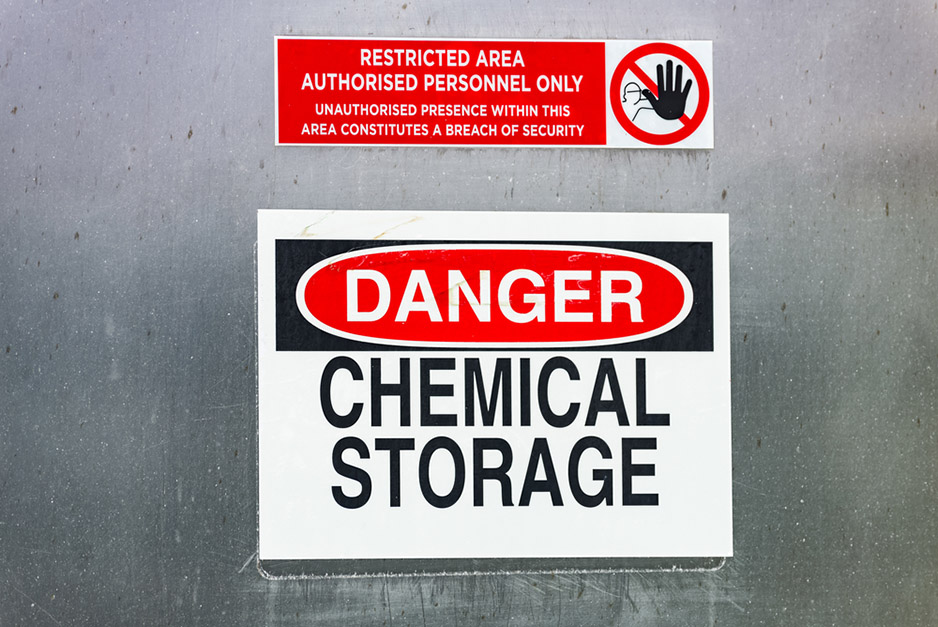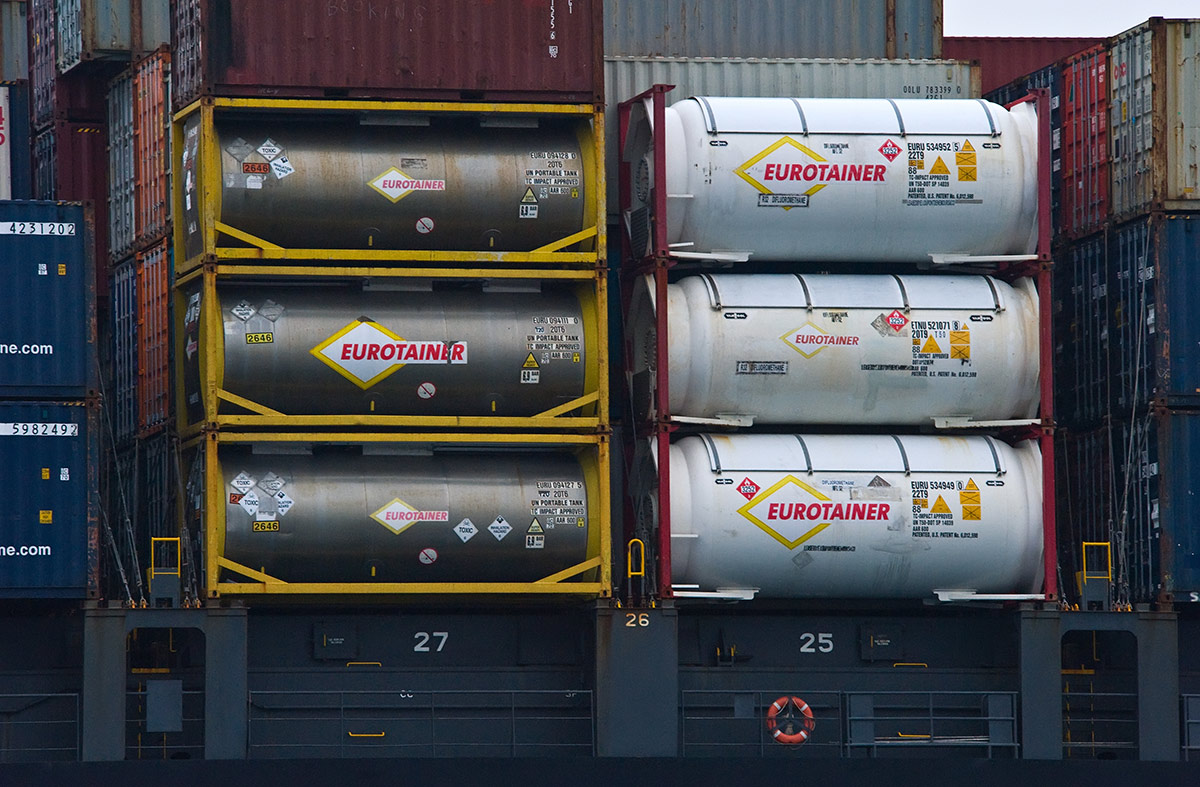These items require careful handling for the sake of public safety and the environment.
There are handling and transport regulations which can vary depending on whether the goods are shipped by ground, air, sea, or rail.
For example, dry ice is considered dangerous when shipped by air but less so if shipped by land or sea. Some air freight shippers will not accept anything requiring dry ice for transport.
Proper handling involves special packaging, clear marking, placards, and accurate and complete paperwork identifying all hazardous goods.
There are nearly one million hazardous materials shipments daily in the United States, and each one must comply with the varying requirements of many organizations. U.S. legal code covers all four freight shipping methods. There is also an International Maritime Dangerous Goods (IMDG) code you must comply with.
Air transport must observe the International Air Transport Association (IATA) Dangerous Goods Regulations and the International Civil Aviation Organization (ICAO) Technical Instructions.
In addition to all those regulations, your packaging must be approved by a branch of the United Nations.
For the most part, shipment of hazardous materials by air, ground, or sea depends on the specific hazardous items, though, usually, the requirements do not vary much. The cost is the key variance.
Highway Regulations
Ground transport is the most popular method of transport of hazardous materials due to cost and convenience. Truck transport, however, in comparison to rail freight, is five times as dangerous. Largely the same rules and regulations apply to both carrier types because they are overland and interstate.
The freight company must carry proper documentation that states the chemical name, hazard class, identification number, and packaging group, with further identifiers after in parentheses, and labeled packaging type and weight.
Packaging must be in containers approved by the United Nations Committee of Experts on the Transport of Dangerous Goods, and shipping drums must have a minimum thickness.
Air Regulations
Air shipping is the fastest but most costly and is especially volatile due to air pressure and temperature changes and enclosed space concerns. International rules are governed by IATA in addition to U.S. codes and packaging regulations by the UN.
The Dangerous Goods Regulations manual is the only code recognized by airlines and it outlines requirements and items that may not be shipped by air. IATA is most concerned with items such as lithium ion batteries, due to explosion risk, and medications, as consumables that can be damaged by temperature change. As such, air freight has additional temperature control regulations and time and temperature-sensitive labeling requirements. Packaging on air freight should be pressure tested.

Sea Regulations
While maritime transport of hazardous materials is generally very safe, it is very time intensive, and some chemicals may degrade in the voyage. It is used for international shipping, and laws in both countries apply. Sea freight requires special forms and is the most cost-effective and environmentally friendly route to ship goods.
Rail Regulations
Hazardous materials restrictions via freight cargo are regulated by the Department of Transportation, Federal Railway Administration. Rail is the safest way to move dangerous chemicals over long distances, and most of the same rules as land/truck transport apply.
It is the safest and slower alternative, so it is an ideal method of moving medical waste freight because the product is not a necessary production component and there is less time urgency in delivery. It is more cost-effective than trucking over long distances and is also much safer for volatile substances being moved in large quantities.

Insight From An Expert:
Lenin Diaz, of Better Well Cementing For All, is a fluids and cementing experts in the oil and gas industry. He's spent more than two decades working in challenging conditions all over the world. His job is to supervise and consult in the oil field during the drilling of oil wells. Here's what Lenin had to say when we reached out:
"I've worked on many drilling projects, including some, where urgent attention was needed. Oilwell integrity involves essential knowledge and experience that spans engineering, chemistry, physics, Geology, and many other sciences. When mistakes occur, lives can be lost, and the environment can suffer. When transporting and handling hazardous materials, our attention needs to be at the highest level of vigilance. This is especially the case when dealing with fluids and materials that travel between countries, cultures, and environments. Best practices in safety are known internationally, but never assume that the people up the supply chain are as vigilant and knowledgeable as you are. Check, and check again!"
Conclusion
While each route of shipping varies in requirements and prohibitions of hazardous materials, for the most part they are similar, with exceptions for air freight packaging which may need accommodation for temperature and pressure changes.
The main considerations that should be taken are time and cost—waste materials can likely be shipped more slowly via a more cost-effective method, but items for consumption with expiration dates need to be shipped rapidly, and costs are more competitive.
Safety is also an issue, and freight is faster via highway, but truck transport is five times more dangerous than rail, so highly volatile items in large quantities should be shipped via rail.
Cost also varies—a short trip via highway is more economical than rail, but a cross-country trip is much more cost-effective by rail. Another factor is geography—overland methods aren’t possible for most international shipping, and even for landlocked countries, it may be illogical if having to pass through several other international territories all with differing regulations.











